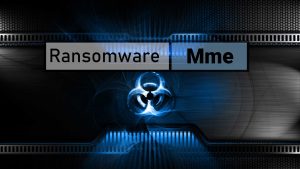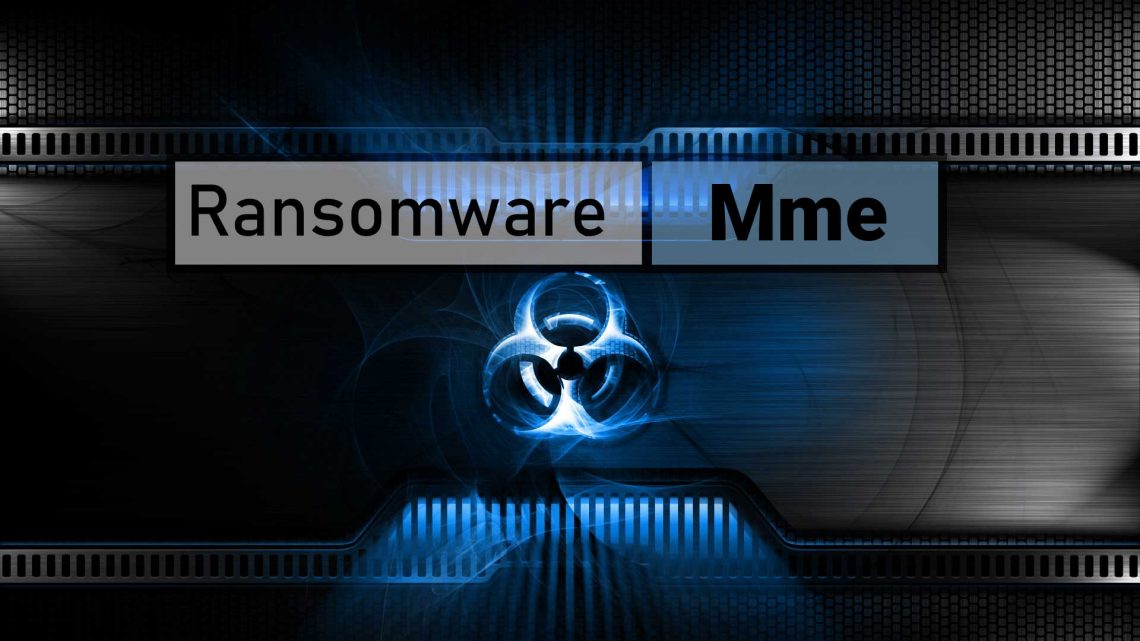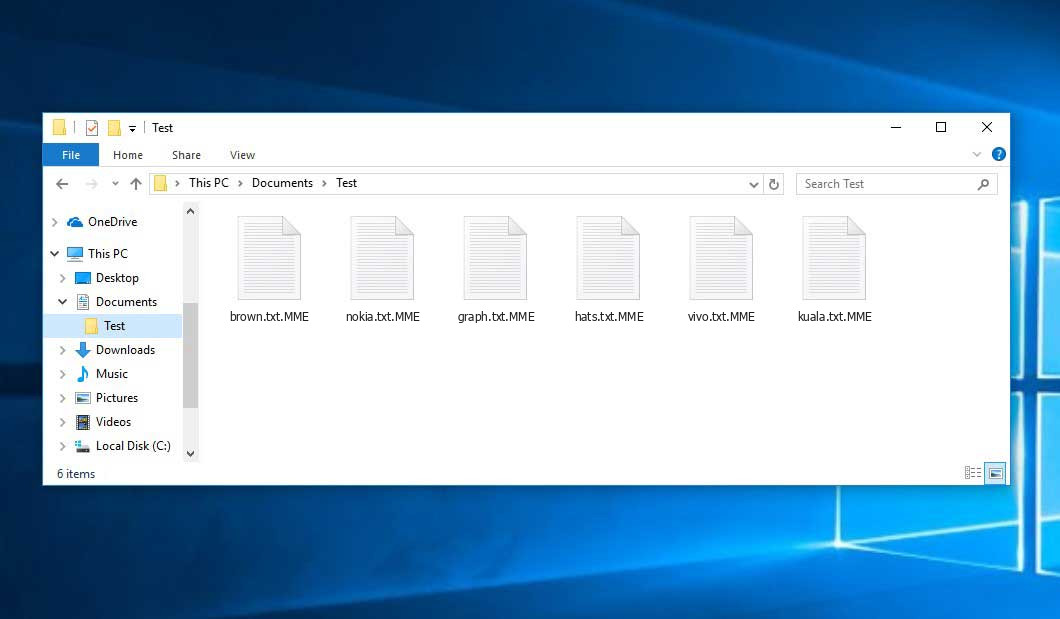The Mme virus belongs to the ransomware type of infection. Ransomware of this type encrypts all the data on your PC (photos, text files, excel sheets, audio files, videos, etc) and appends its own extension to every file, leaving the Read_Me.txt text files in each folder with the encrypted files.
What is known about the Mmevirus?
☝️ A scientifically accurate denomination for the Mme would be “a ransomware malicious agent”.
Mme appends its extra .MME extension to the name of each encrypted file. For example, an image entitled “photo.jpg” will be changed to “photo.jpg.MME”. Just like the Excel table named “table.xlsx” will become “table.xlsx.MME”, and so forth.
In each directory containing the encoded files, a Read_Me.txt file will be created. It is a ransom money note. It contains information on the ways of contacting the racketeers and some other remarks. The ransom note usually contains a description of how to purchase the decryption tool from the racketeers. That is it.
Mme overview:
| Name | Mme Virus |
| Extension | .MME |
| Ransomware note | Read_Me.txt |
| Detection | VHO:Trojan-Banker.MSIL.BitStealer, Trojan:Win32/RedLine.MB!MTB, Win32:FakeInst-AE [Trj] |
| Symptoms | Your files (photos, videos, documents) have a .MME extension and you can’t open them. |
| Fix Tool | See If Your System Has Been Affected by Mme virus |
The Read_Me.txt file coming in package with the Mme ransomware provides the following dispiriting information:
Attention! All your files, documents, photos, databases and other important files are encrypted The only method of recovering files is to purchase an unique decryptor. Only we can give you this decryptor and only we can recover your files. The server with your decryptor is in a closed network TOR. You can get there by the following ways: ----------------------------------------- 1. Download Tor browser - hxxps://www.torproject.org/ 2. Install Tor browser 3. Open Tor Browser 4. Open link in TOR browser: hxxp://mmeeiix2ejdwkmseycljetmpiwebdvgjts75c63camjofn2cjdoulzqd.onion/?101NELNZQXO 5. and open ticket ----------------------------------------- Alternate communication channel here: hxxps://yip.su/2QstD5
In the screenshot below, you can see what a directory with files encrypted by the Mme looks like. Each filename has the “.MME” extension added to it.
How did Mme ransomware end up on my PC?
There are plenty of possible ways of ransomware injection.
Nowadays, there are three most exploited ways for hackers to have the Mme virus working in your system. These are email spam, Trojan introduction and peer file transfer.
If you open your inbox and see letters that look just like notifications from utility services providers, postal agencies like FedEx, web-access providers, and whatnot, but whose mailer is unknown to you, be wary of opening those emails. They are very likely to have a viral item enclosed in them. Thus it is even riskier to download any attachments that come with letters like these.
Another thing the hackers might try is a Trojan file scheme1. A Trojan is an object that infiltrates into your computer disguised as something different. For example, you download an installer of some program you want or an update for some service. But what is unboxed turns out to be a harmful program that encodes your data. As the installation file can have any title and any icon, you have to make sure that you can trust the resource of the stuff you’re downloading. The optimal way is to trust the software companies’ official websites.
As for the peer networks like BitTorrent or eMule, the threat is that they are even more trust-based than the rest of the Internet. You can never know what you download until you get it. Our suggestion is that you use trustworthy resources. Also, it is a good idea to scan the folder containing the downloaded items with the antivirus as soon as the downloading is finished.
How do I get rid of the Mme virus?
It is important to inform you that besides encrypting your data, the Mme virus will probably install the Azorult Spyware on your machine to get access to credentials to different accounts (including cryptocurrency wallets). The mentioned program can derive your logins and passwords from your browser’s auto-filling data.
Sometimes criminals would decrypt several of your files to prove that they indeed have the decryption program. As Mme virus is a relatively new ransomware, anti-malware engineers have not yet found a method to reverse its work. Nevertheless, the decoding instruments are frequently updated, so the effective countermeasure may soon be available.
Of course, if the evildoers do the job of encrypting someone’s critical data, the desperate person will most likely comply with their demands. Nevertheless, paying to criminals does not necessarily mean that you’re getting your data back. It is still risky. After getting the money, the racketeers may deliver a wrong decryption code to the injured party. There were reports of criminals simply vanishing after getting the ransom without even writing back.
The best safety measure against ransomware is to have aan OS restore point or the copies of your essential files in the cloud storage or at least on an external disk. Obviously, that might be insufficient. Your most important thing could be that file you were working upon when it all started. Nevertheless, it is something. It is also reasonable to scan your drives with the antivirus program after the system is rolled back.
Mme is not the only ransomware of its kind, since there are other specimens of ransomware out there that act in the same manner. Examples of those are Eiur, Hkgt, Lltt, and some others. The two basic differences between them and the Mme are the ransom amount and the method of encryption. The rest is the same: documents become inaccessible, their extensions changed, ransom notes are created in each folder containing encoded files.
Some lucky victims were able to decode the blocked files with the help of the free tools provided by anti-ransomware specialists. Sometimes the hackers mistakenly send the decoding key to the victims in the ransom readme. Such an extraordinary fail allows the injured part to restore the files. But obviously, one should never expect such a chance. Remember, ransomware is a bandits’ instrument to lay their hands on the money of their victims.
How сan I avoid ransomware injection?
Mme ransomware doesn’t have a endless power, so as any similar malware.
You can protect your system from ransomware infiltration in three easy steps:
- Never open any letters from unknown mailers with strange addresses, or with content that has likely no connection to something you are waiting for (can you win in a money prize draw without even taking part in it?). If the email subject is likely something you are expecting, check all elements of the dubious email with caution. A fake email will surely have mistakes.
- Do not use cracked or unknown software. Trojans are often spreaded as an element of cracked software, most likely under the guise of “patch” preventing the license check. But dubious programs are very hard to distinguish from trustworthy software, as trojans may also have the functionality you need. You can try to find information about this software product on the anti-malware message boards, but the optimal way is not to use such software.
- And to be sure about the safety of the objects you downloaded, scan them with GridinSoft Anti-Malware. This software will be a powerful defense for your personal computer.
Reasons why I would recommend GridinSoft2
There is no better way to recognize, remove and prevent ransomware than to use an anti-malware software from GridinSoft3.
Download Removal Tool.
You can download GridinSoft Anti-Malware by clicking the button below:
Run the setup file.
When setup file has finished downloading, double-click on the setup-antimalware-fix.exe file to install GridinSoft Anti-Malware on your computer.

An User Account Control asking you about to allow GridinSoft Anti-Malware to make changes to your device. So, you should click “Yes” to continue with the installation.

Press “Install” button.

Once installed, Anti-Malware will automatically run.

Wait for the Anti-Malware scan to complete.
GridinSoft Anti-Malware will automatically start scanning your system for Mme infections and other malicious programs. This process can take a 20-30 minutes, so I suggest you periodically check on the status of the scan process.

Click on “Clean Now”.
When the scan has completed, you will see the list of infections that GridinSoft Anti-Malware has detected. To remove them click on the “Clean Now” button in right corner.

Frequently Asked Questions
🤔 How can I open “.MME” files?Can I somehow access “.MME” files?
Negative. That is why ransomware is so frustrating. Until you decode the “.MME” files you will not be able to access them.
🤔 The encrypted files are very important to me. How can I decrypt them quickly?
Hopefully, you have made a copy of those important files. In case you haven’t, there is still a chance that you do have a Restore Point from some time ago to roll back the whole system to the moment when it had no virus yet, but already had your files. All other solutions require time.
🤔 If GridinSoft deletes the Mme malware, will it also delete my files that were encrypted?
Absolutely not! Unlike the ransomware program itself, the encrypted files do not jeopardize your system.
GridinSoft Anti-Malware will delete actual infections from your system. The virus that has attacked your computer is most likely still functional and it scans your system periodically to encode any new files you might create on your computer after the attack. As it has been said above, the Mme malware comes with the company. It installs backdoors and keyloggers that can take your account passwords by trespass and provide malefactors with easy access to your system after some time.
🤔 What should I do if the Mme virus has blocked my computer and I can’t get the activation key.
In such an unfortunate situation, you need to have a memory stick with a previously installed Trojan Killer. Use Safe Mode to do the cleaning. You see, the ransomware starts automatically as the system boots and encodes any new files created or brought into your system. To suppress this process – use Safe Mode, which allows only the vital programs to run upon system boot. Consider reading our manual on running Windows in Safe Mode.
🤔 And what should I do now?
Many of the encoded files might still be within your reach
- If you sent or received your critical files through email, you could still download them from your online mailbox.
- You might have shared photographs or videos with your friends or relatives. Simply ask them to give those images back to you.
- If you have initially downloaded any of your files from the Web, you can try to do it again.
- Your messengers, social networks pages, and cloud disks might have all those files too.
- Maybe you still have the needed files on your old PC, a notebook, phone, flash memory, etc.
HINT: You can use file recovery programs4 to retrieve your lost information since ransomware encrypts the copies of your files, removing the authentic ones. In the video below, you can learn how to recover your files with PhotoRec, but be advised: you can do it only after you kill the virus with an anti-malware program.
Also, you can contact the following governmental fraud and scam sites to report this attack:
- In the United States: On Guard Online;
- In Canada: Canadian Anti-Fraud Centre;
- In the United Kingdom: Action Fraud;
- In Australia: SCAMwatch;
- In New Zealand: Consumer Affairs Scams;
- In France: Agence nationale de la sécurité des systèmes d’information;
- In Germany: Bundesamt für Sicherheit in der Informationstechnik;
- In Ireland: An Garda Síochána;
To report the attack, you can contact local executive boards. For instance, if you live in USA, you can have a talk with FBI Local field office, IC3 or Secret Service.
I need your help to share this article.
It is your turn to help other people. I have written this guide to help people like you. You can use the buttons below to share this on your favorite social media Facebook, Twitter, or Reddit.
Brendan SmithHow to Remove MME Ransomware & Recover PC

Name: MME Virus
Description: MME Virus is a ransomware-type infections. This virus encrypts important personal files (video, photos, documents). The encrypted files can be tracked by a specific .MME extension. So, you can't use them at all.
Operating System: Windows
Application Category: Virus
User Review
( votes)References
- You can read more on Trojans, their use and types in the Trojan-dedicated section of GridinSoft official website.
- GridinSoft Anti-Malware Review from HowToFix site: https://howtofix.guide/gridinsoft-anti-malware/
- More information about GridinSoft products: https://gridinsoft.com/comparison
- Here’s the list of Top 10 Data Recovery Software Of 2023.



